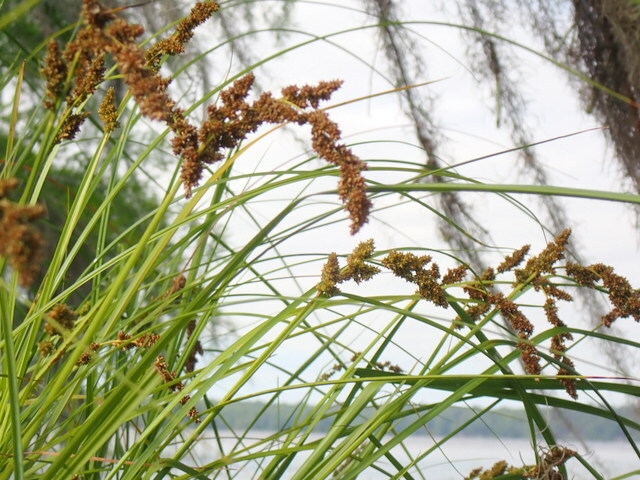Cypress-Knee Sedge
(Carex decomposita)
Cypress-Knee Sedge (Carex decomposita)
/
/

mfeaver
CC BY 4.0
Image By:
mfeaver
Recorded By:
Copyright:
CC BY 4.0
Copyright Notice:
Photo by: mfeaver | License Type: CC BY 4.0 | License URL: http://creativecommons.org/licenses/by/4.0/ | Rights Holder: mfeaver | Publisher: iNaturalist | Date Created: 2023-04-25T22:57:08-07:00 |

























Estimated Native Range
Summary
Carex decomposita, commonly known as Cypress-knee Sedge, is a perennial sedge native to freshwater marshes, wet prairies, and swampy woodlands in the southeastern United States. It typically grows 2-3 feet tall and forms dense clumps. The plant features narrow, grass-like leaves and inconspicuous greenish-brown flowers that appear in late spring to early summer. While the flowers are not showy, they are an important food source for wetland wildlife.
Cypress-knee Sedge is valued for its ability to stabilize soil and its use in water filtration in constructed wetlands. It is often used in rain gardens, wetland restoration projects, and as a naturalizing plant in moist garden areas. This sedge thrives in full sun to partial shade and requires consistently wet soils, making it suitable for areas that are too damp for many other plants. It is generally low-maintenance but may require division if it becomes too dense. Cypress-knee Sedge is not typically troubled by pests or diseases, but it can spread aggressively in ideal conditions, which should be considered when planting in small areas.CC BY-SA 4.0
Cypress-knee Sedge is valued for its ability to stabilize soil and its use in water filtration in constructed wetlands. It is often used in rain gardens, wetland restoration projects, and as a naturalizing plant in moist garden areas. This sedge thrives in full sun to partial shade and requires consistently wet soils, making it suitable for areas that are too damp for many other plants. It is generally low-maintenance but may require division if it becomes too dense. Cypress-knee Sedge is not typically troubled by pests or diseases, but it can spread aggressively in ideal conditions, which should be considered when planting in small areas.CC BY-SA 4.0
Plant Description
- Plant Type: Grass
- Height: 1.5-2 feet
- Width: 1.5-2 feet
- Growth Rate: Rapid
- Flower Color: N/A
- Flowering Season: Spring, Summer
- Leaf Retention: Deciduous
Growth Requirements
- Sun: Part Shade, Full Shade
- Water: High
- Drainage: Standing
Common Uses
Erosion Control, Low Maintenance, Water Garden
Natural Habitat
Freshwater marshes, wet prairies, and swampy woodlands in the southeastern United States
Other Names
Common Names: Cypress Swamp Sedge, Decomposed Sedge
Scientific Names: , Carex decomposita, Carex paniculata var. decomposita,
GBIF Accepted Name: